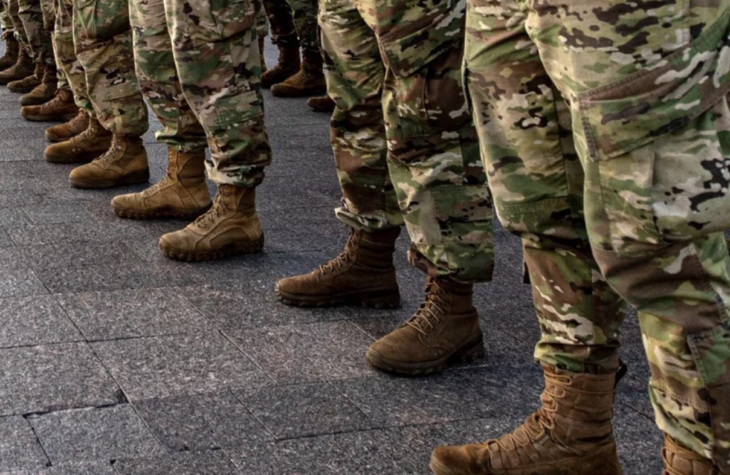
Primer: State Guards Are Useful Tools for Governors
Summary
On December 2, 2021, Governor Ron DeSantis (R-FL) announced his intention to reestablish the Florida State Guard, a state-controlled civilian emergency response unit, as part of a $100 million proposal to bolster the resources of the Florida National Guard and improve the state’s disaster and emergency readiness capabilities.
Irresponsible and hyperbolic partisan reporting from multiple major news organizations framed the proposal as a “paramilitary force” that would answer only to Governor DeSantis, implying the Florida State Guard represents a potential threat to the federal government. However, the establishment of State Guards is a longstanding practice dating back to before the American founding that perfectly comports with both the U.S. Constitution and the design of our federal republic.
Brief History
State Guards trace their origins back to the militias of the various American colonies. These militias served as the primary military force until the Continental Army was established in 1775. Following the War of Independence, individual states maintained their own militias.
Various laws passed in the aftermath of the War of Independence further delineated the relationship between state militias and the federal government. The Militia Act of 1792 placed command of state militias under the Adjutant General of each state and made clear that state militias would not be eligible for federal funding. The Calling Forth Act of 1792, however, gave the president the power to federalize state militias in the event of potential insurrections or the threat of invasion, laying the policy predicate for the modern-day National Guard.
These state militias saw heavy action in the U.S. Civil War and helped secure vital positions to free up the larger Union Army to engage the Confederacy. These state forces were eventually transformed into the United States National Guard following the passage of the Militia Act of 1903, resulting years later in the mobilization of all National Guard units during World War I.
Governors called for the restoration of state defense forces during World War I to protect the homeland while National Guard units were deployed and fighting overseas. The Home Defense Act of 1917 provided for the establishment of state defense forces while the National Guard was federalized. The demands of the Cold War engendered similar reliance by the federal government on National Guard units to amplify U.S. military combat power, eventually prompting Congress to amend the National Defense Act of 1983 to allow states to maintain permanent State Defense Forces or State Guards.
Policy Implications
Currently, twenty-two states and the territory of Puerto Rico have an active duty State Guard or state defense force that answers only to the governor and remains permanently outside the purview and control of the federal government. This is authorized under Title 32 of the U.S. Code, ensuring that these state defense forces operate separately and distinctly from National Guard units.
The states that currently maintain state defense forces are: Alaska, California, Connecticut, Georgia, Indiana, Louisiana, Maryland, Massachusetts, Michigan, Mississippi, Missouri, New Mexico, New York, Ohio, Oregon, Rhode Island, South Carolina, Tennessee, Texas, Vermont, Virginia, and Washington.
The proposal by Governor DeSantis would authorize a volunteer force of some 200 personnel and make Florida the twenty-third state to maintain a State Guard.
In recent history, these State Guard units have been mobilized by governors in various capacities.
The New York Guard was activated in the wake of the 9/11 attacks to assist in recovery efforts and protecting critical infrastructure. The Louisiana State Guard as well as other state defense forces were activated following the devastation of Hurricane Katrina in 2005 to assist in disaster assistance and recovery. The Texas State Guard was deployed in the aftermath of Hurricane Harvey in 2017 and currently operates in tandem with Texas law enforcement personnel as part of Operation Lone Star.
Governor Greg Abbott (R-TX) found the performance of the Texas State Guard during Hurricane Harvey so useful that he proposed a doubling of its size. As part of Texas’s efforts to restore order at the southern border, Governor Abbott signed a $1.8 billion bill into law in September 2021 that allocated an additional $300 million to the Texas Military Department for additional personnel.
State defense forces are valuable tools for governors to utilize and have several distinct advantages that provide governors with vital resources in the midst of a disaster or emergency:
- State Guard units are not bound by the Posse Comitatus Act. This act prohibits federal military forces from engaging in law enforcement activities within the borders of the United States.
- State Guard units are permanently based in their respective states, which provides for more immediate deployment and reaction to potential emergencies and pending disasters.
- State Guard units are inherently less bureaucratic than the National Guard, answering solely to their respective governor via their state adjutant general.
- State Guard units are flexible. Enhancing or diminishing their mission and resource allocation is solely a state consideration. This means that funding and operational considerations are not mired in the larger, and often more partisan, debates found in Washington D.C.
- State Guard units are composed of volunteers from within their respective states, providing a deeper connection and understanding among members to the needs of their communities.
Concluding Assessment
As the United States suffers from rising crime, radical efforts to defund the police, and an ongoing and unabating border crisis, State Guard units are an important tool to provide governors with effective resources in dealing with current and future emergencies.



